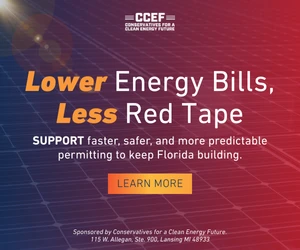A team of engineers from Michigan State University led by Associate Professor Annick Anctil projects that rising fuel efficiency standards for internal combustion engine (ICEV) vehicles in the U.S. could lower their greenhouse gas emissions to be close to those of electric vehicles (EVs) by 2030.
The analysis, published earlier this year in the Journal of Environmental Management, should give pause to EV-obsessed policymakers doling out lavish tax credits for purchasing EVs and banning the sale of new ICE vehicles. At least twelve states aim to phase out sales of new, gas-powered cars by 2035.
Anctil and her colleagues estimated well-to-wheel greenhouse gas emissions for new EVs and ICEVs sold each year between 2018 and 2030. “Well-to-wheel” emissions include both fuel production pollution (oil drilling, refining, transportation, etc. for gasoline versus electricity generation) and tailpipe emissions. Their projections also took into account different vehicle types, average miles driven, average driving speeds (city vs. highway), ambient temperature (which greatly affects efficiency, particularly for EVs), electric grid power sources, and rising fuel efficiency standards for gas vehicles, which they projected to rise by 30 percent for new ICEVs sold in 2030 based on current federal rules.
Car makers have raised fuel efficiency in ICEVs through making them lighter, improving powertrains, and adding hybrid technology which incorporates lithium-ion batteries, electric motors, and regenerative brakes that recapture energy while driving.
“Our results showed that in 2018, the average emissions for an EV were 116 g CO2 eq/km, while for an ICEV, it is 196 g CO2 eq/km when considering the representative vehicle,” the authors reported. “In 2030, the average GHG emissions for an EV are 112 g CO2 eq./km, while for an ICEV, they are 142 g CO2 eq./km.”
Moreover, they found that if the U.S. adopted more ambitious standards for ICEVs, with close to a 50% efficiency boost by 2030, their overall emissions could be comparable to those of EVs.
The researchers made two big assumptions in making that prediction. First, they assumed that nuclear power plant shutdowns in the U.S. would offset increases in wind, solar, and other renewables, making the U.S. grid only marginally less carbon intensive by 2030. The less polluting the electric grid, the more environmentally friendly EVs become. Second, they assumed that EV driving efficiency would remain unchanged. This latter assumption is very conservative (as the authors admit) because the energy density of lithium-ion battery packs has rapidly increased over the past decade. If EV makers use smaller, lighter batteries that store the same amount of energy, that will boost EVs’ driving efficiency. EV batteries currently weigh around a thousand pounds on average.
Still, the results show that increasingly efficient ICEVs can be an environmentally-friendly part of a lower-carbon future, especially in colder regions where EV efficiency suffers greatly in winter (a 30-40 percent reduction vs a 15 percent reduction for ICEVs), in areas with lots of highway driving (again, where ICEVs excel versus EVs in efficiency), and in places with less renewable energy on the grid.
“Both vehicle types can lead to lowered GHG emissions over time, with one faring better than the other in certain conditions,” they wrote. “Focusing on improving both the EV and ICEV routes can, therefore, lower the transportation GHG emissions at a faster pace, especially given than ICEV emissions have reduced faster than EV emissions.”
Anctil and her colleagues noted that New York in particular is an area where ICEVs might actually might be less polluting than EVs by 2030, as the state plans to replace all of its carbon-free nuclear power with natural gas. Ironically, New York recently announced it will ban sales of new gas cars in 2035.
This article was originally published by RealClearScience and made available via RealClearWire.










